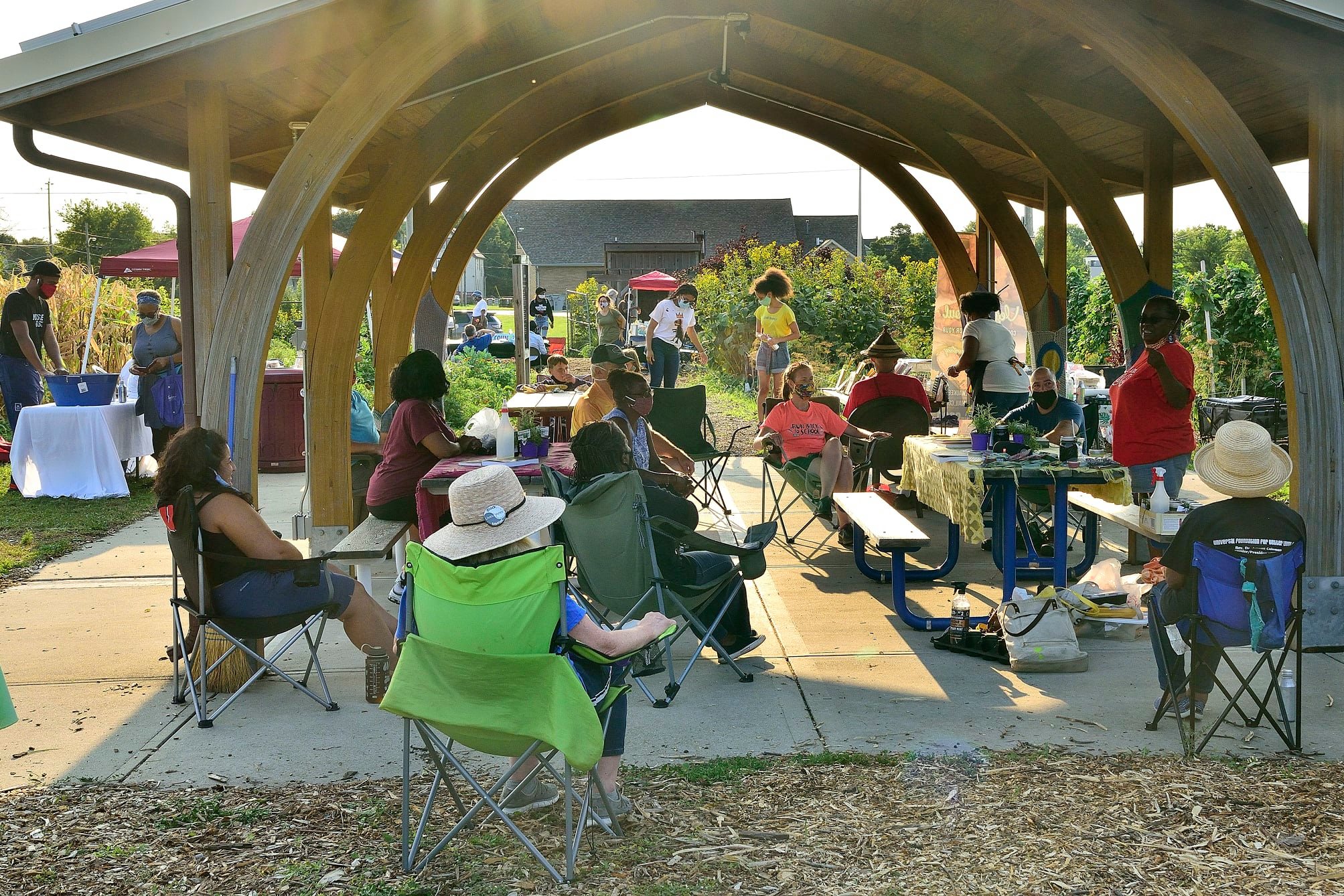What is a community garden? Before we ask this question, we should ask: What is a community? I had no answer for this until my mother and I began renting plots at Alice’s Garden in Milwaukee’s Lindsey Heights neighborhood.
Alice’s Garden represents an intersection. Not only is it physically at the center of Milwaukee, broaching diverse and segregated neighborhoods, it is a social intersection where many different people enjoy a shared appreciation of life, food, and plants in a welcoming space.
Alice’s comprises over 2 acres of a city block that was originally the center of a thriving neighborhood before being razed in the 1950s to make way for the ParkEast freeway project, which was ultimately never built. The empty city block became a UW-County Extension community garden in 1972 and named Alice’s Garden following the passing of longtime urban community program advocate and Milwaukee County Extension Executive Director, Alice Meade-Taylor. In 2014, Venice Williams became Executive Director of Alice’s Garden. Much of what goes on at Alice’s Garden stems from the drive and passion of Venice, who, along with her husband, Demetrius Williams, builds on a legacy of community outreach and ministry.
Most Alice’s gardeners rent one or two plots to grow some produce and flowers for themselves. Others grow for market, such as Ning, a regular at the West Allis Farmer’s Market. My mom and I are often referred to as the “farmers” because of our many vegetable, herb, and flower plots.


Gardening is not new to many of the Alice’s gardeners nor the neighborhood residents. Many bring gardening and cooking expertise from a home that is not Milwaukee, whether it is the American South or a different country. Passersby of our fence-side plots offer stories of their home gardens or plants they grew in their youth. We have exchanged many plants with other gardeners. We don’t always share the same language, but we communicate through frantic gesturing at plants and smiles.
Alice’s Garden, however, is much more than rented garden plots: It is a meeting space for numerous groups and events. The Labyrinth, for example, invites visitors to walk a spiral path invoking solace and mental clarity. The Herbal Apprenticeship Program and youth entrepreneurship groups bring Milwaukeeans together to learn about agriculture, plant applications, teambuilding, and networking. At the height of summer, events are happening at Alice’s Garden practically every day (and often all day). These events range from book clubs, cooking demos, markets, potlucks, workshops, community discussions on topics such as racial healing, musical performances, yoga, and more.

Alice’s Garden poses a compelling example of how gardens and gardening can bring people together in a shared space and promote not only gardening but so much more, such as cultural awareness. Many people who may not normally engage in gardening are exposed to it by participating in community events at Alice’s Garden.
What does it mean to participate in a community? Where people meet at the intersection of things that humans share in common: A love for plants, a love for food, an appreciation for beauty, and a dire need—clearer now more than ever—for togetherness?

Learn more: The LA Times recently published a front-page article on Alice’s Garden: https://www.latimes.com/politics/story/2020-10-29/milwaukee-racism-black-residents-garden
How can you experience Alice’s Garden for yourself?
- Follow Alice’s Garden on Facebook to stay informed about current events.
- Visit https://www.alicesgardenmke.com/



Hm,.. amazing post ,.. just keep the good work on!